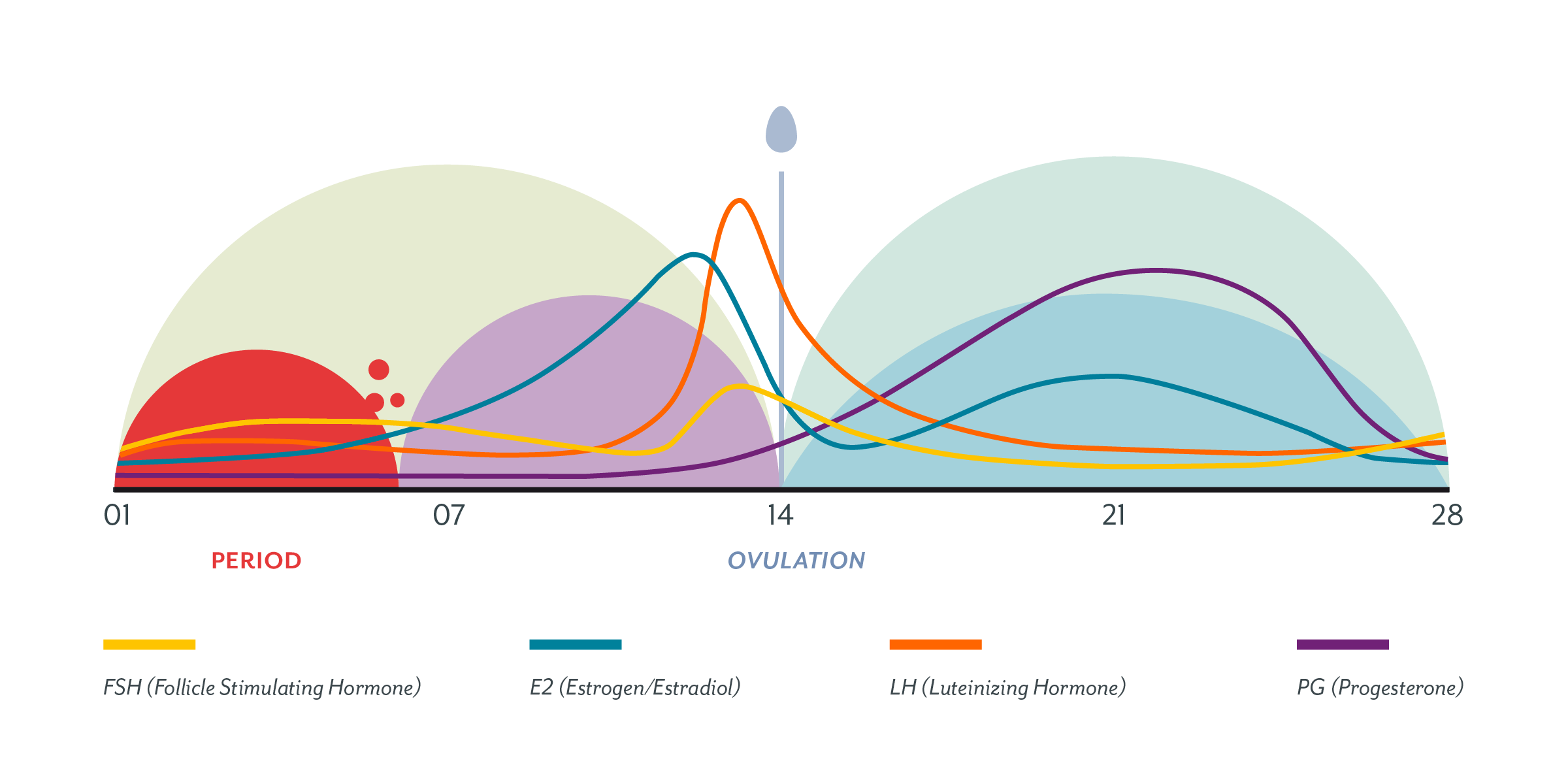The menstrual cycle is more than just the period. In fact, the period is
just the first phase of the cycle. The menstrual cycle is actually made up
of two cycles that interact and overlap—one happening in the ovaries and
one in the uterus. The brain, ovaries, and uterus work together and
communicate through hormones (chemical signals sent through the blood from
one part of the body to another) to keep the cycle going.
A menstrual cycle starts with the first day of the period and ends with
the start of the next period. An entire menstrual cycle usually lasts
between 24 and 38 days, but the length may vary from cycle to cycle, and
may also change over the years. Cycle length changes between menarche
(when periods first start during puberty) and menopause (when periods stop
permanently).
Understanding the menstrual cycle is important because it can impact the
body from head to toe. Some people notice changes in their hair, skin,
poop, chronic disease symptoms, mental health, migraine headaches, or the
way they experience sex at different points in the menstrual cycle. It’s
also the body’s way of preparing for pregnancy over and over again, so
people having penis-in-vagina sex (the kind of sex you can become pregnant
from) may want to pay attention to the menstrual cycle. Hormonal methods
of birth control prevent some or all of the steps in the cycle from
happening, which keeps pregnancy from occurring.

The first day of menstrual bleeding is considered Day 1 of the cycle.Your period can last anywhere from 3 to 8 days, but 5 days is average. Bleeding is usually heaviest on the first 2 days.
Once the bleeding stops, the uterine lining (also called the endometrium) begins to prepare for the possibility of a pregnancy. The uterine lining becomes thicker and enriched in blood and nutrients.
Somewhere around day 14, an egg is released from one of the ovaries and begins its journey down the fallopian tubes to the uterus. If sperm are present in the fallopian tube at this time, fertilization can occur. In this case the fertilized egg will travel to the uterus and attempt to implant in the uterine wall.
If the egg was not fertilized or implantation does not occur, hormonal changes signal the uterus to prepare to shed its lining, and the egg breaks down and is shed along with lining. The cycle begins again on Day 1 menstrual bleeding.
Coded by Müge Arslantürk
This page does not and should not replace medical advise. If you have any
medical concers regarding your menstrual cycle please contact a physician. The information used for this page has been acquired
here
and here.